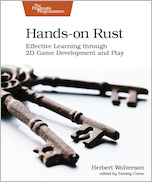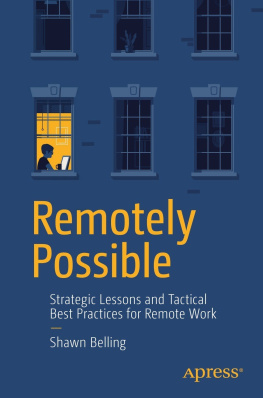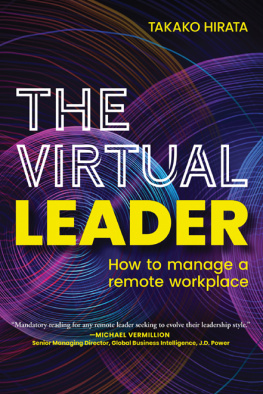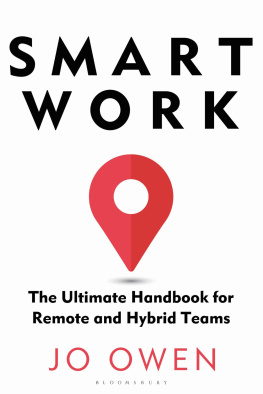Introduction
Welcome to the world of Virtual Not Distant, where we believe that people can work and create together without sharing the same four walls. Sometimes organisations struggle with helping their people transition to an office-optional approach, but with the right mindset it is possible to adopt remote work practices which can enable team members to work together while being apart.
At Virtual Not Distant we are immersed in the world of digital collaboration, remote leadership and online teamwork and we regularly share what we are learning from, and what we are working and reflecting on. We know that remote collaboration is possible, but it involves a different approach to that we have been used to taking in the colocated space. Every month we create in-depth written content, reflecting on specific aspects of remote working and virtual teams in particular the change management process involved in transitioning from a traditional, colocated office setting to something more flexible.
Much of this reflection and discussion goes on in the 21st Century Work Life podcast, but also we have been populating our blog since the company was set up in 2016. With the aim of sharpening up our message and finding a new set of readers, we compiled a series of blog posts and turned them into this book.
In Thinking Remote, we reflect on specific topics and learning points which come out of the current sociological shift. Some of the topics might be high on your agenda, if you are looking at more office-optional possibilities for your team, while others you might not have thought about yet.
We have curated them here, with a set of reflections at the end of each chapter aimed at team leaders and managers. Some of these are designed to be discussed with your team, as part of your ongoing strategy and team-building activities, while others might be more appropriate for internal reflection in the first instance. Every team and every team leader are different, and so will take different things from what follows.
Furthermore, this short book is a handy tool for informal learning within management teams, and readers are encouraged to share and discuss their responses to the leadership reflection questions which are found at the conclusion of each chapter.
We hope this book will be a good starting point for your own journey into the future of work, and in creating systems and culture which help you to get the most out of your own activities and environment.
Pilar Orti and Maya Middlemiss
1
Designing the digital workspace: what we can learn from the physical space
I n this chapter, Pilar reflects on how we can consciously shape our digital workspaces in the same way as our physical ones, and how both environments impact on the culture that we want to nurture and create.
As we learn more about what helps people to be productive at work and the kind of environments that enable collaboration, companies are investing heavily in the design of their physical workspaces. However, the conversation about the digital tools used for productivity and collaboration rarely goes beyond: Which one shall we use?
I have observed that little thought goes into designing the digital workspace in a way that is in line with the organisations or teams culture, or that helps us change it when we need to do so. And often, how little thought is given to how employees will interact emotionally with the space, or how it might encourage spontaneous interaction between people.
The conversation around what makes an ideal office design is getting interesting, so why dont we listen in and apply what we are learning to design the digital workspace better? And while we are at it, lets remember that even in companies not going remote, people are still getting most of their work done through technology so this conversation is relevant to most organisations, regardless of whether they are adopting an office-optional approach.
The physical workspace
In March 2018 I attended an event in London called Experimenting with Workspace. In the session, we looked at how the layout of an office space influences where we sit with others to work on a task together.
We considered how we can design workspaces to encourage certain interactions, and how workplace design can affect them. Often, we need spaces where people can have impromptu conversations in the open, but also where private conversations or work in isolation can be carried out.
For example, one way of encouraging people from different departments to interact is to have only one set of toilets on each floor: to go to the toilet, you need to walk by quite a number of people whom otherwise you might never come across.
This is a very practical solution, and one which cant (yet) be transferred to the digital space. However, the concepts behind it spark some questions to ask ourselves when making decisions about what our workspaces physical and digital could look like.
The importance of culture
What is the culture like in your organisation? Is it collaborative or competitive?
If its competitive, designing an open space for discussion, where everyone can hear everyone else and see each others designs or scribbles, might not be the best option that is, unless you want to challenge and change that culture through changing the environment.
The same thought needs to go into designing our digital workspace. If we want to encourage collaboration, we can set up online tools and processes through which everyone makes their work visible to everyone else. However, if we are really competitive, those spaces might end up being unhealthy, bragging noticeboards. Or if we are used to keeping our heads down and barely interacting with anyone else, when we move to online communication, we could end up with an unused space that screams: Nobody cares!
What behaviours are you nurturing?
When introducing any kind of tool, we need to consider what behaviours they are likely to result in, and would like to encourage.
For example, if we want to encourage more transparency in an organisation that is unused to sharing progress and having open conversations, perhaps we can start by encouraging different levels of sharing the work: such as in smaller groups in a team space as opposed to an organisation-wide space, or else in a private group or channel.
A team I recently worked with wanted to start working out loud in the organisation consciously making our work and thought process visible to one another, deliberately putting our work and ideas out there for our team members to see but they were not used to having conversations in the online, written space.
Their first step towards being more visible in an organisation was to practise sharing their learning, achievements and progress inside the team, before moving on to make their thoughts available to everyone else.








